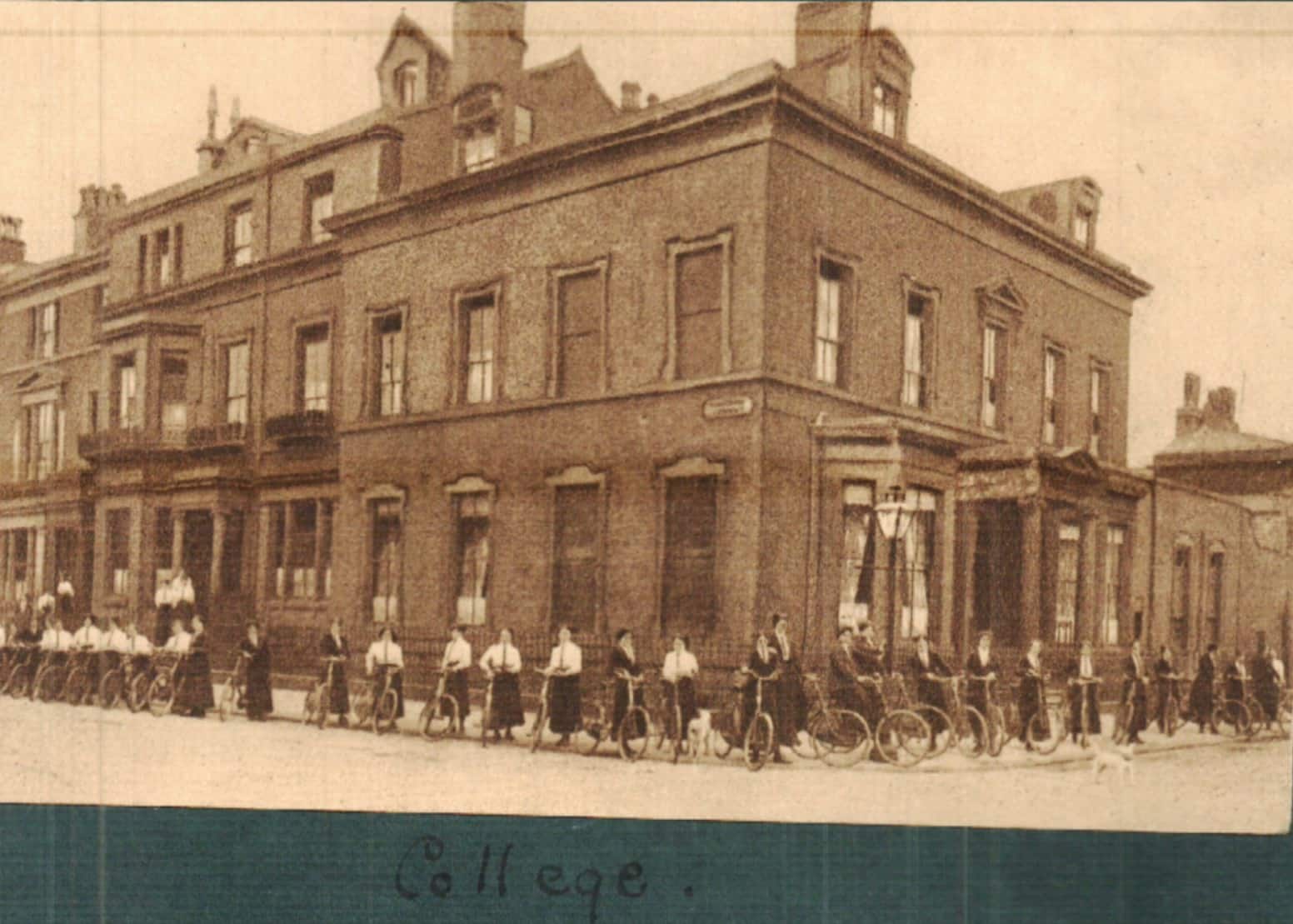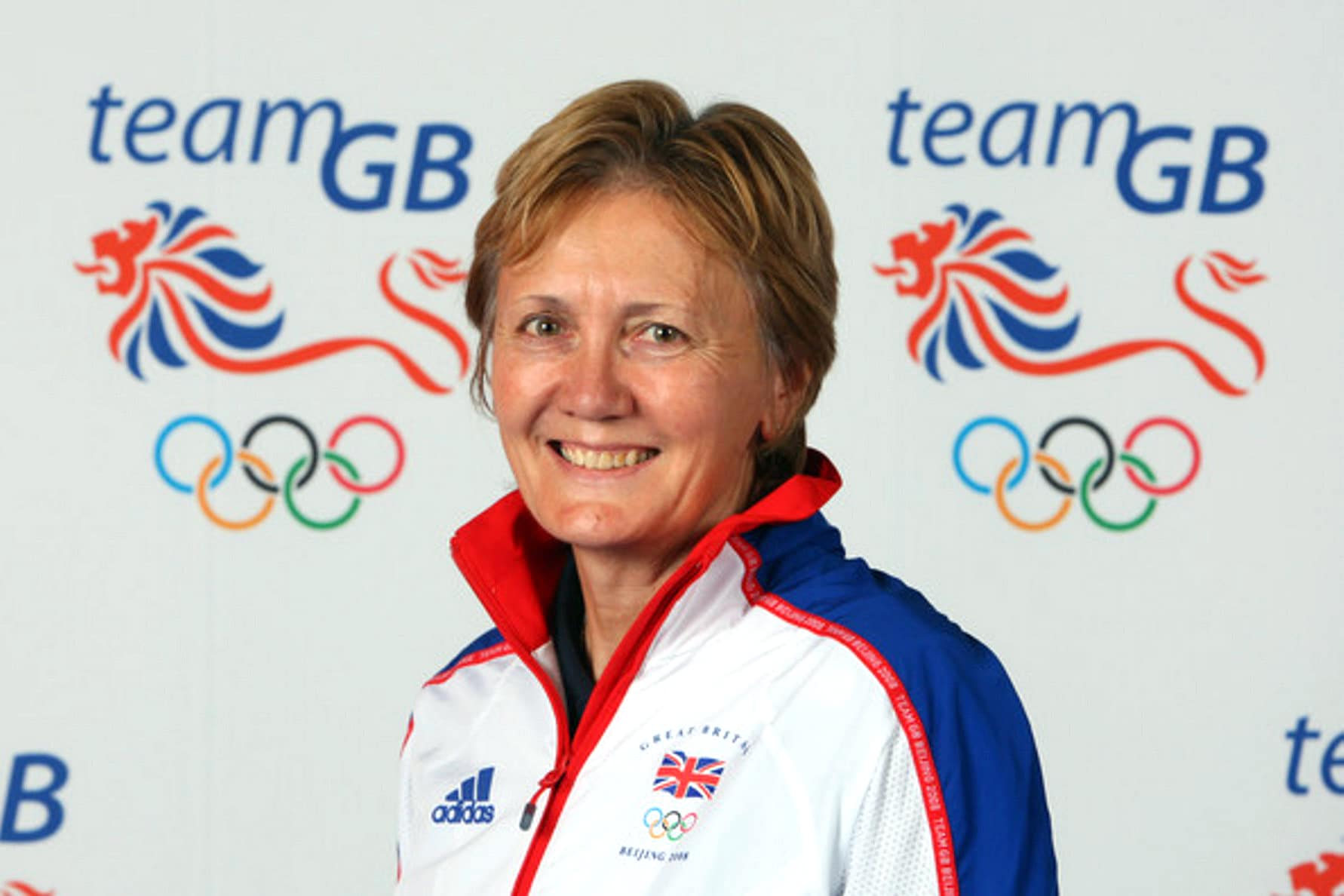The I M Marsh campus of Liverpool John Moores University has a long history. The college was founded in 1900 by Irené Mabel Marsh under the name of Liverpool Physical Training College. From small beginnings the college grew over the years and by the 1960s I M Marsh College of Physical Education, as it was then known, was one of the pre-eminent and influential women’s PE colleges in the country with many international hockey players found among its student and lecturers. So, who was Irené Mabel Marsh and what is the origin story of this successful institution?
Irené Mabel Marsh
Born in December 1875 Irené Mabel was the third child of a Liverpool family of ten: four boys and six girls. Just like her other siblings, Irené was talented at games, gymnastics and swimming.
In 1892 Irené signed up for a two-year course at Southport Physical Training College. Here she proved to be an outstanding student and gained several awards including a first-class Certificate for Hygiene and Physiology along with the Diploma of the Southport Physical Training College. She was also successful in gaining a Diploma from the National Health Society and National Physical Recreation Society.
 |
|
Irené Mabel Marsh. Courtesy of Liverpool John Moores University Archive. |
In January 1887 Irené Marsh was appointed by Doctor Alexander Alexander to the post of Physical Director for Ladies to run classes for women and children at the YMCA in Liverpool. She was a visionary woman who understood the importance of physical education and physical exercise for everyone. Her vision was not limited to women and girls; she began to develop classes for boys up to the age of 10, as well as for the deaf and blind. She was ahead of her time with her inclusive ideals and as the numbers attending her classes increased, there was a need for more teachers. Where was she to get them?
Irené decided she would train teachers herself! Her first trainee teachers were Salomé, her sister, and a friend Muriel Peet who worked as her assistants. This was the genesis of her recognising the need to train her own teachers and it was the start of what would go on to become the I M Marsh College of Physical Education.
Small Beginnings
In 1900 Irené obtained her first property at 110 Bedford Street. With a training base she could call her own, her vision was now a reality and the Liverpool Physical Training College was founded. The second cohort of students were enrolled with Irené Marsh as the full-time member of staff with support of Salomé and Muriel, her first cohort trainees.
 |
|
Liverpool Physical Training College at 110 Bedford Street. Courtesy of Liverpool John Moores University Archive. |
The course ran for two years. The first known prospectus in 1908 had an amazing range of subjects: anatomy; ambulance; remedial gymnastics; physiology; massage; pathology; hygiene; drilling; sick nursing; educational gymnastics; cricket; badminton; hockey; hand ball; tennis; rounders; lacrosse; goal-ball; fencing; rowing; basket-ball; vigoro (a cross between cricket and tennis); children’s games; swimming, lifesaving; and dancing. Facilities for games and swimming were hired away from Bedford Street.
There was a long waiting list for teachers in local schools so Irené Marsh increased the number of students to her college to help fill the gaps. As the number of students grew, she knew she had to find a facility where all the students could be accommodated, and the work undertaken in one place. In 1920 Barkhill was bought with its house and extensive grassed playing area. In January 1921 the first set of ‘freshers’ to Barkhill College arrived. By 1922, the College numbers had increased enough to now support 14 hockey teams! A remarkable level of success in such a short time.
 |
|
Above: Barkhill College, Liverpool Physical Training College, 1920. Below: The College’s First XI hockey team, 1922. Courtesy of Liverpool John Moores University Archive. |
 |
In 1929 a three-year course started at the College. Some students were already taking a third year but up until then it had not been compulsory. Irené Marsh not only appointed esteemed experts in their field, but her college also produced renowned games players and dancers. She had such faith in the training provided by the college that she often appointed her own students to the staff. Two such student appointments were Kath Henderson who completed her training in 1902, and Mabel Bryant who completed her training in 1908. Kath Henderson was an England international hockey player (1904-11) and Mabel Bryant was also an England international (1901-29) as well as an international cricketer.
 |
 |
|
|
Kath Henderson (left) and Mabel Bryant (right), alumni and later staff of I M Marsh College of Physical Education. Courtesy of Liverpool John Moores University Archive. |
||
Other significant student-to-staff appointments were May Hilton Royle who completed her training in 1906. She became a renowned physiotherapist who co-founded the School of Physiotherapy, and Ancoat’s Hospital in Manchester where she was Principal for 23 years. Margaret Einert completed her training in 1910, and was appointed to the staff in 1915 – her expertise was dance. By 1917 she was asked to take the Liverpool Education Committee classes for teachers of rhythmic dancing. She travelled abroad giving lectures and classes, wrote a book and several papers, and in 1939 set up the Margaret Einert Rhythmic Dance School in Liverpool.
The Next Era
On 3 April 1938 Irené Marsh died after a seizure aged just 63. She was a dynamic personality who had built a training college that attracted students from all corners of the world. When students left, they took up appointments as PE teachers in establishments worldwide.
April 1939 saw Miss Marie Travers Crabbe appointed Principal. Like her predecessor she appointed staff of very high quality for every subject. The college was able to attract staff who were international sport players, world leaders in dance and gymnastics and scholars for the academic subjects. Her appointments included two international hockey players, Duffy Moffett and Maureen Short and one international lacrosse player, B J Lewis. Marie Crabbe kept the college open throughout the Second World War despite Liverpool being a target for extensive bombing. Barkhill did not escape bomb damage and staff and students helped put out fires.
 |
|
I M Marsh former lecturer Maureen Short representing England at hockey in 1965. The Hockey Museum. |
Following lengthy negotiations, Lancashire County Council took over the control of the private Liverpool Physical Training College in August 1947. This move brought the benefit of grants to students for tuition and accommodation and opened the way for a wider demographic group of students. The Governors remained keen to retain the original ethos of the college and gained permission to rename it after its founder. It became I M Marsh College of Physical Education.
From 1964 onwards, the courses continued to develop with the dance/drama course instituted, the introduction of the Diploma in Outdoor Education, a one year in-service course for practising teachers as well as a Diploma in Drama in Education. In September 1975 a three-year Bachelor of Education degree leading for the first time to a four-year honours degree was offered to all students who entered with two ‘A’ levels and satisfied Liverpool University entrance qualifications. The college continued to attract the most talented sports women and international hockey stars such as Marie Birtwistle, Maggie Souyave, Linda Carr, Mary Eckersall and Sheila Morrow were all graduates from the college.
 |
|
I M Marsh past student and England and Great Britain hockey player and manager Maggie Souyave. Courtesy of Maggie Souyave. |
University Status
The late part of the twentieth century saw many changes to governance at the college. In April 1977 the college linked with Liverpool Polytechnic and then five years later in it formally became part of Polytechnic. Now degrees could be awarded by the Council for National Academic Awards. Further changes came in 1992 as a result of the Further and Higher Education Act. During this period Higher Education in Britain underwent major changes and new degree courses were introduced designed to better support the needs of modern society. Liverpool Polytechnic became part of Liverpool John Moores University (LJMU).
For most of this period the physical education courses had been delivered at the original Barkhill site, but in recent years more and more courses were delivered from the city centre campus and there were moves to sell off the site. In 2011 LJMU announced its intention to sell the Barkhill Campus. However, after pressure from many quarters, the University reversed this decision in 2022 with plans for the campus to become a high-class recreation centre for staff, students and the community. A fitting future for such an historic site.
In October 2021 LJMU granted an honorary Bachelor of Education Degree to all past students of I M Marsh, who gained their Certificate in Education prior to 1980. This was a real acknowledgment of the contributions made to teaching, teacher training, physical education, education and many other and varied professions taken up by its alumni across the world.
By Sheila Wigmore
Former student at I M Marsh 1964-1967
Emeritus Professor of Physical Education, Sheffield Hallam University
Sheila Wigmore and former colleague, Professor Patricia A Shenton OBE, have recently published a book on the history of I M Marsh CPE. For more information on this publication and how to obtain a copy visit: I M Marsh College of Physical Education Book – LJMU Alumni Shop








